Figure shows a cycle ABCDA undergone by 2 moles of an ideal diatomic gas. The curve AB is a rectangular hyperbola and T1=300K and T2=500K. Determine the work done by the gas in the process A→B.

−3.320kJ
4.326kJ
2.326kJ
3.326kJ
The correct Answer is:A
Evidently, for the process A→B
V∝1T or VT=constant (say,K)
or TdV+VdT=0or dV=−VdTT
(a) Now, work done by the gas in a process is given by
W=ΣPdV or WAB=ΣnRTdVV=Σ(−nRdT)
WAB=500∫300−nRdT=−(2mol)(8.314J/mol−K)
[500−300]K=−3.326kJ
Topper's Solved these Questions
Similar Questions
Figure shows the variation of the internal energy U with the density ρ of an ideal monoatomic gas for a therodynamic process AB. Process AB is a part of arectangular hyperbola. Find the work done (in joule) by gas in process AB.
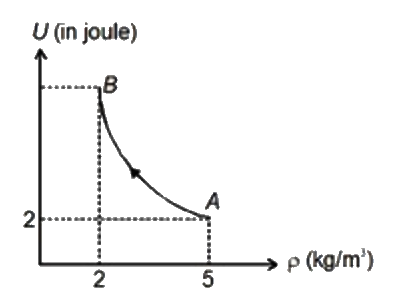
View Solution4 millimoles of an ideal monoatomic gas is taken through a cyclic process ABCDA, is shown in the figure, AB and CD are two isothermal curves having temperature 300 K and 600 K respectively. The total work done by the gas during the cyclic process is xRloge25. find the value of x
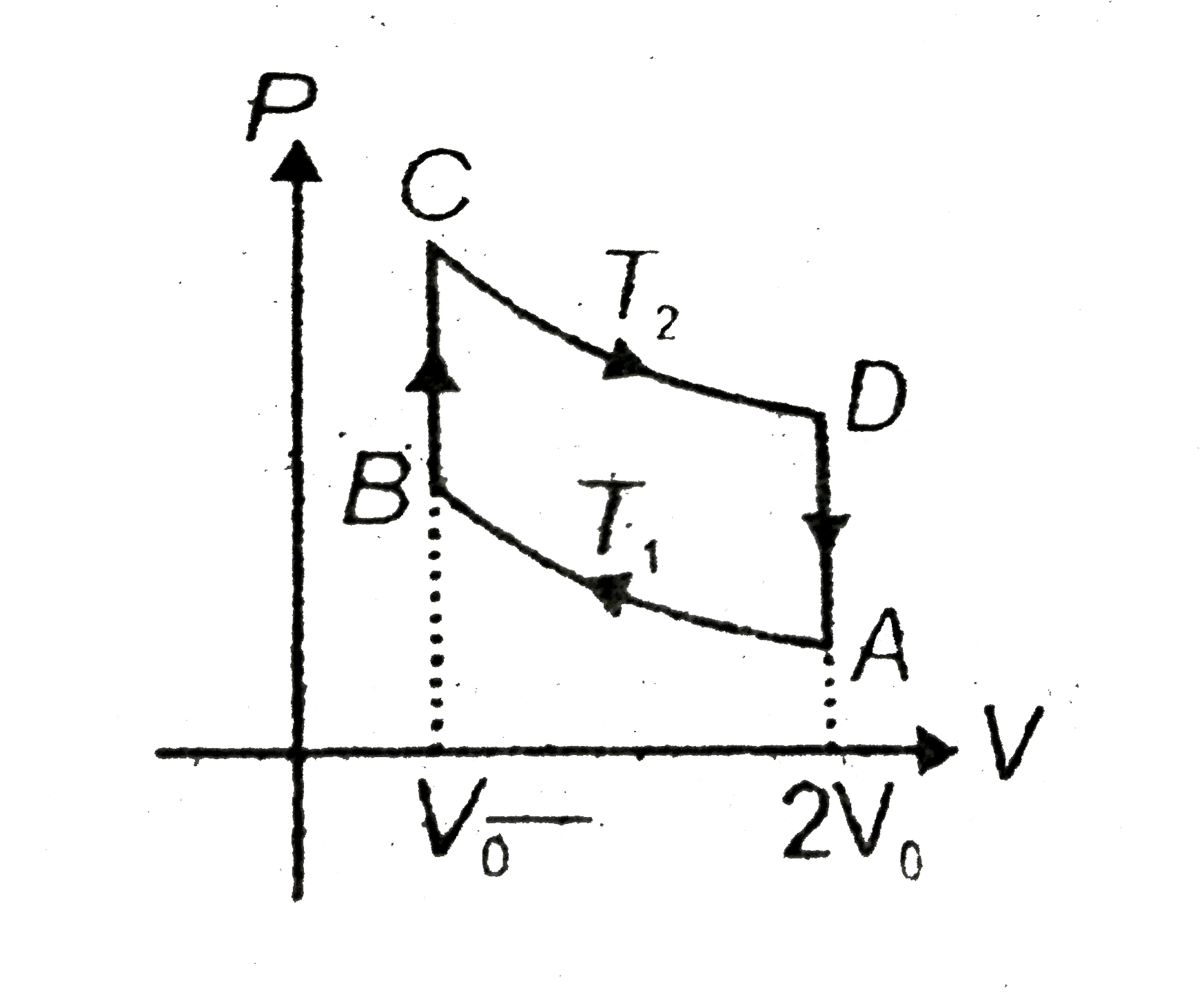 .
.
View Solution
Knowledge Check
Two moles of an ideal gas are undergone a cyclic process 1-2-3-1. If net heat exchange in the process is 300J, the work done by the gas in the process 2-3 is
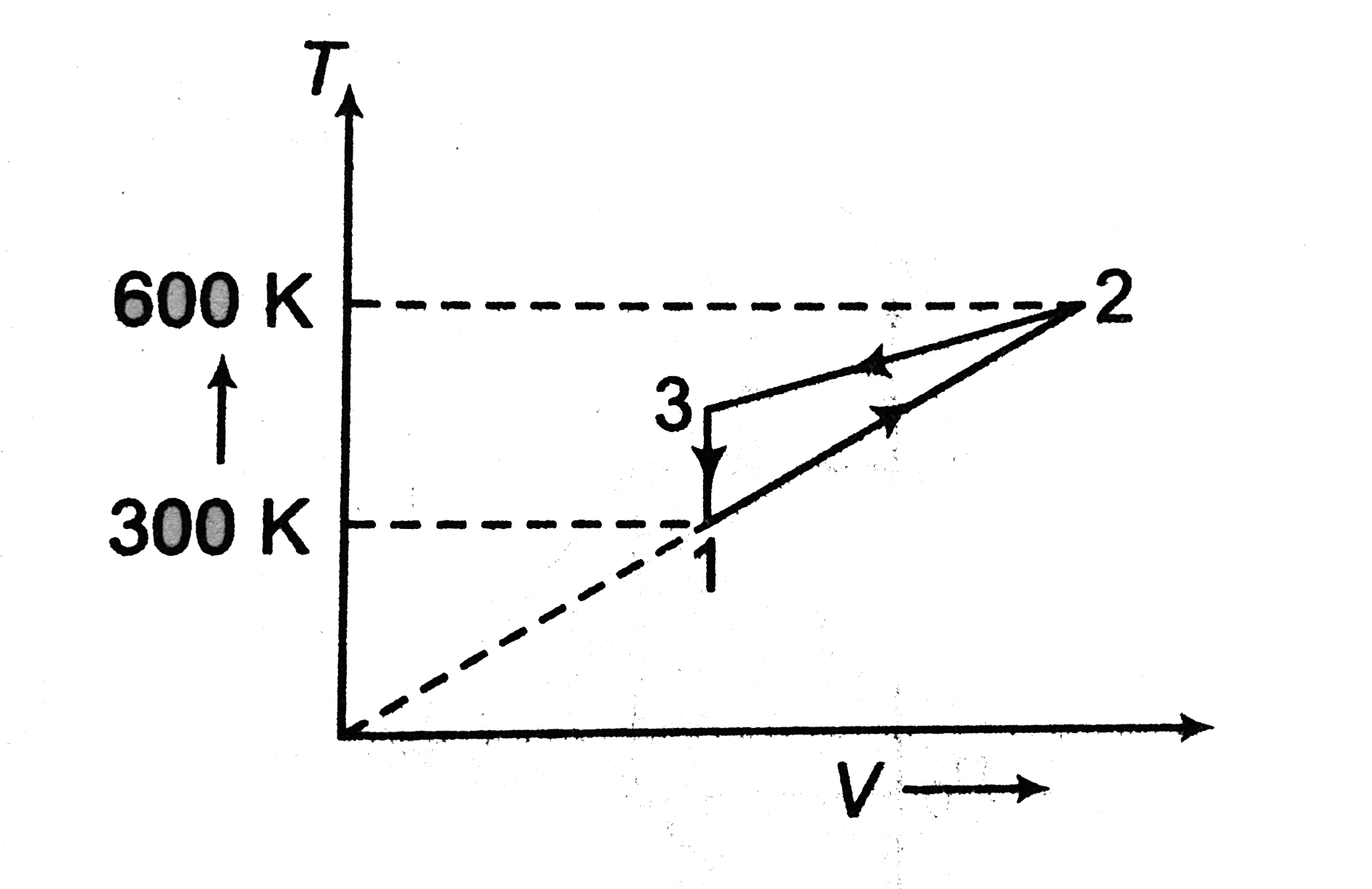 A−500JB−5000JC−3000JDNone of these
A−500JB−5000JC−3000JDNone of these3 moles of an ideal mono atomic gas performs a cycle as shown in fig. If gas temperature TA=400K TB=800K,TC=2400K, and TD=1200K. Then total work done by gas is
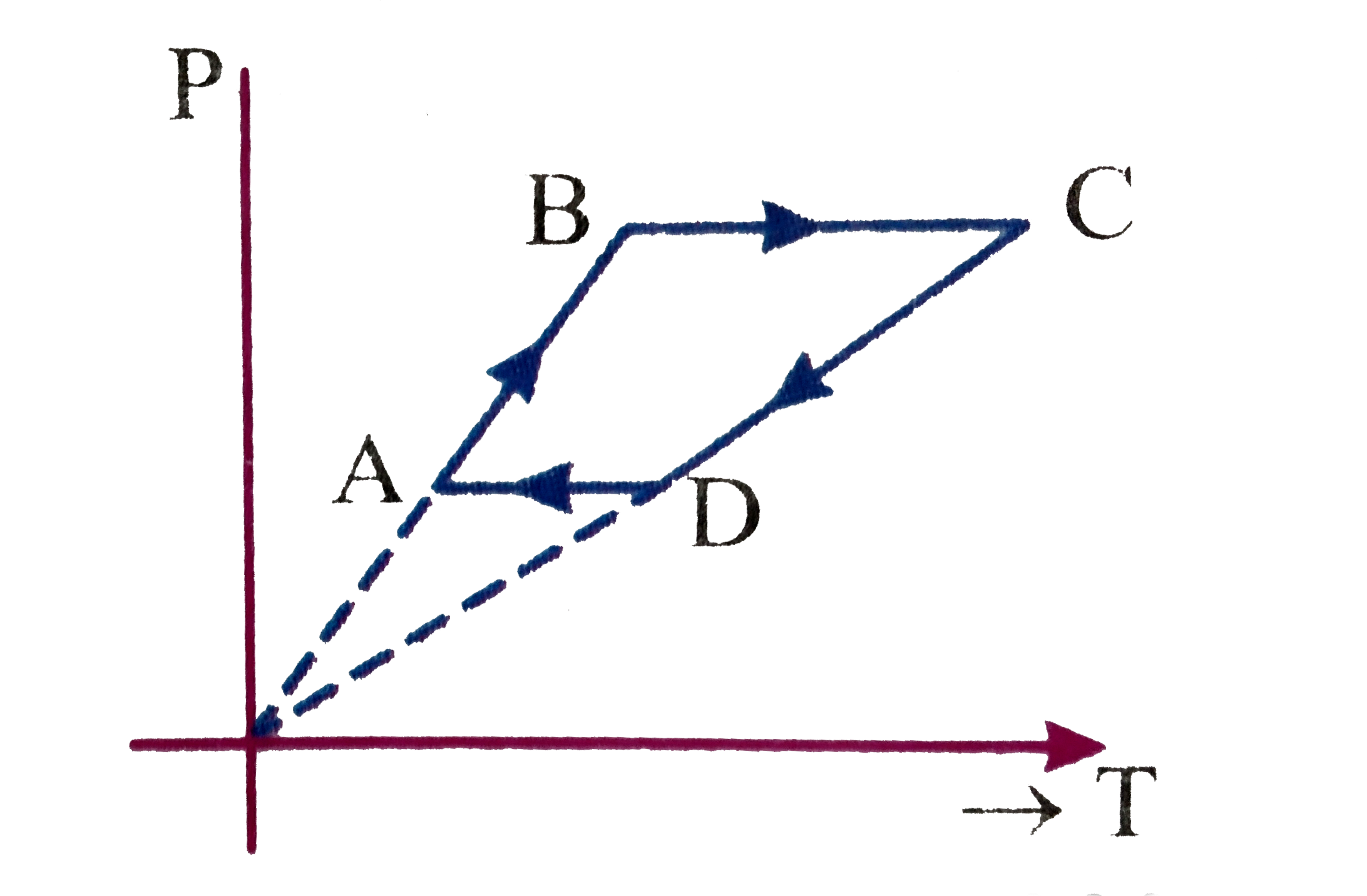 A2400RB1200RC2000RDZero
A2400RB1200RC2000RDZeroTwo moles of an ideal mono-atomic gas undergo a cyclic process as shown in the figure. The temperatures in different states are given as 6T1=3T2=2T4=T3=1800K. Determine the work done by the gas during the cycle.
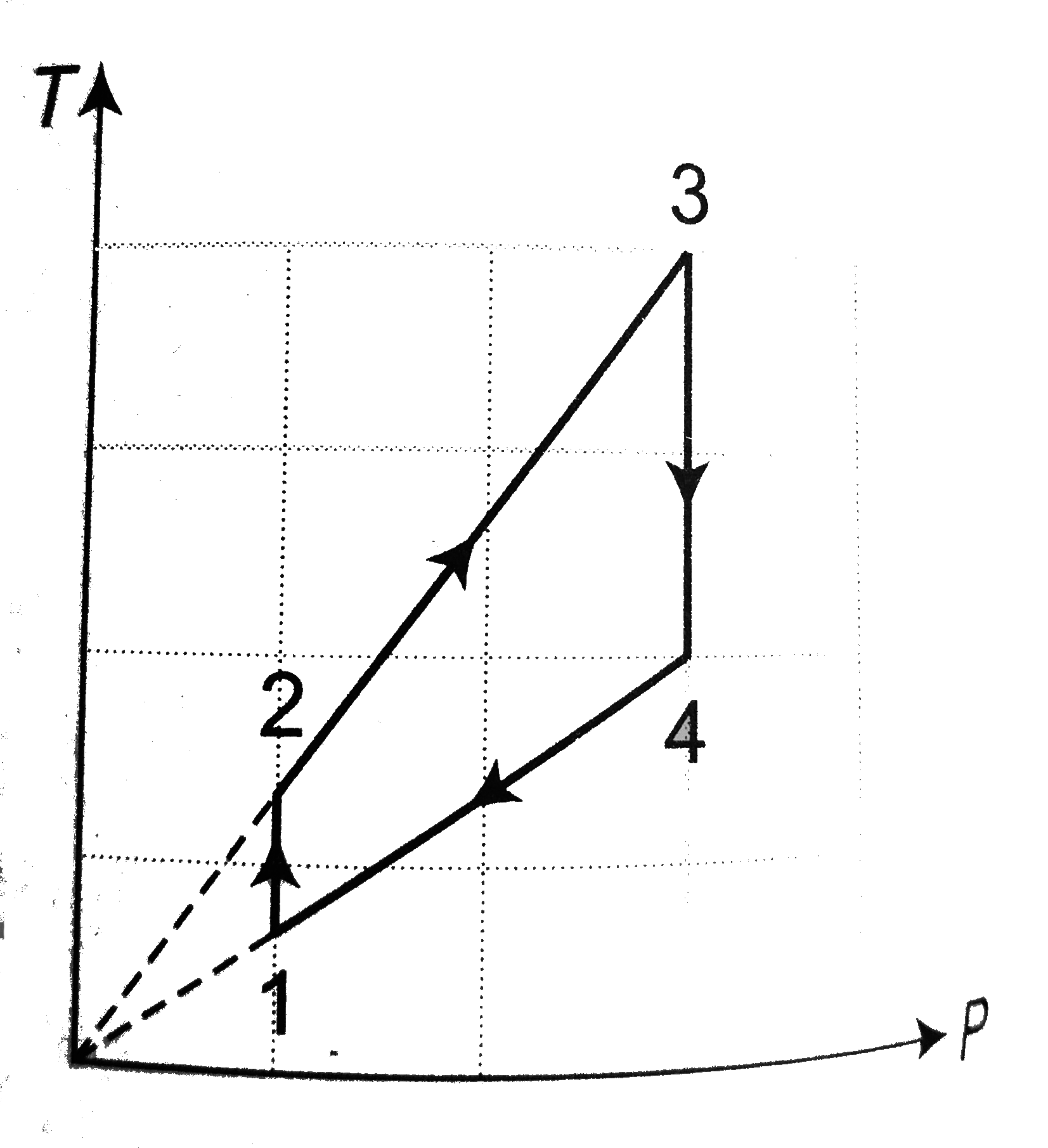 A−1200RB1200RC1575RD−800R
A−1200RB1200RC1575RD−800R
Two moles of an ideal monatomic gas is taken through a cycle ABCA as shown in the P-T diagram. During the process AB , pressure and temperature of the gas very such that PT=Constant. It T1=300K, calculate
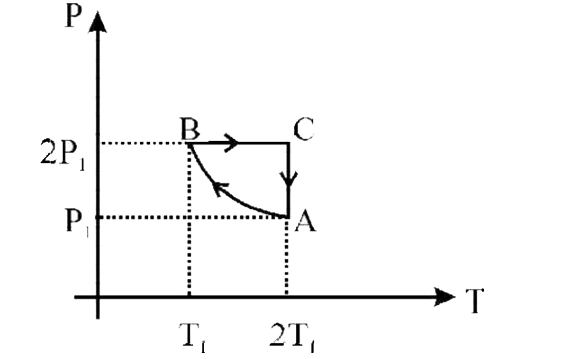
(a) the work done on the gas in the process AB and
(b) the heat absorbed or released by the gas in each of hte processes. Give answer in terms of the gas constant R.
View SolutionIn figure, a cyclic process ABCA of 3 moles of an ideal gas is given. The temperature of the gas at B and C are 500k and 1000K respectively. If work done on the gas in process CA is 2500J then find the net heat absorbed or released by an idela gas. Take R=25/3J/mol−K.
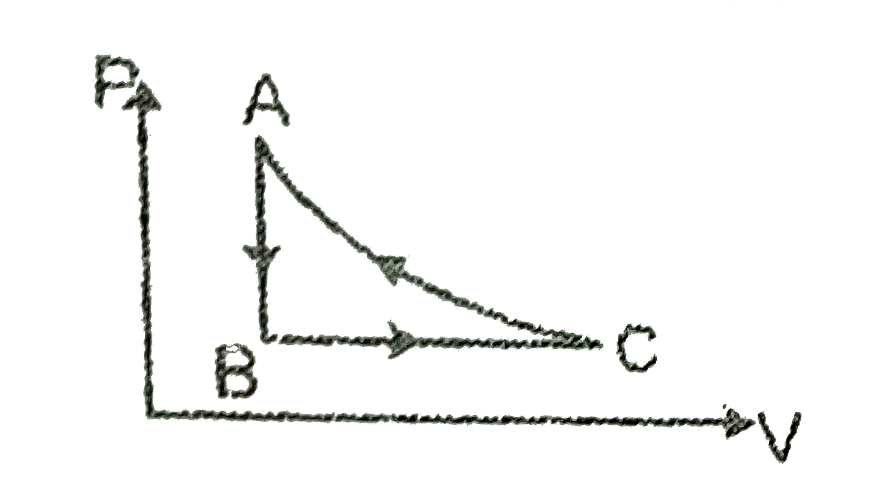
View SolutionTwo moles of an ideal monoatomic gas undergoes a cyclic process ABCA as shown in V-T diagram below:

Work done by the gas during the entire cycle is :
View SolutionOne mole of an ideal monoatomic gas undergoes a cyclic process as shown in figure . Temperature at point 1 =300K and process 2−3 is isothermal .
_S01_113_O01.png) .
.
Net work done by gas in complete cycle is
View Solution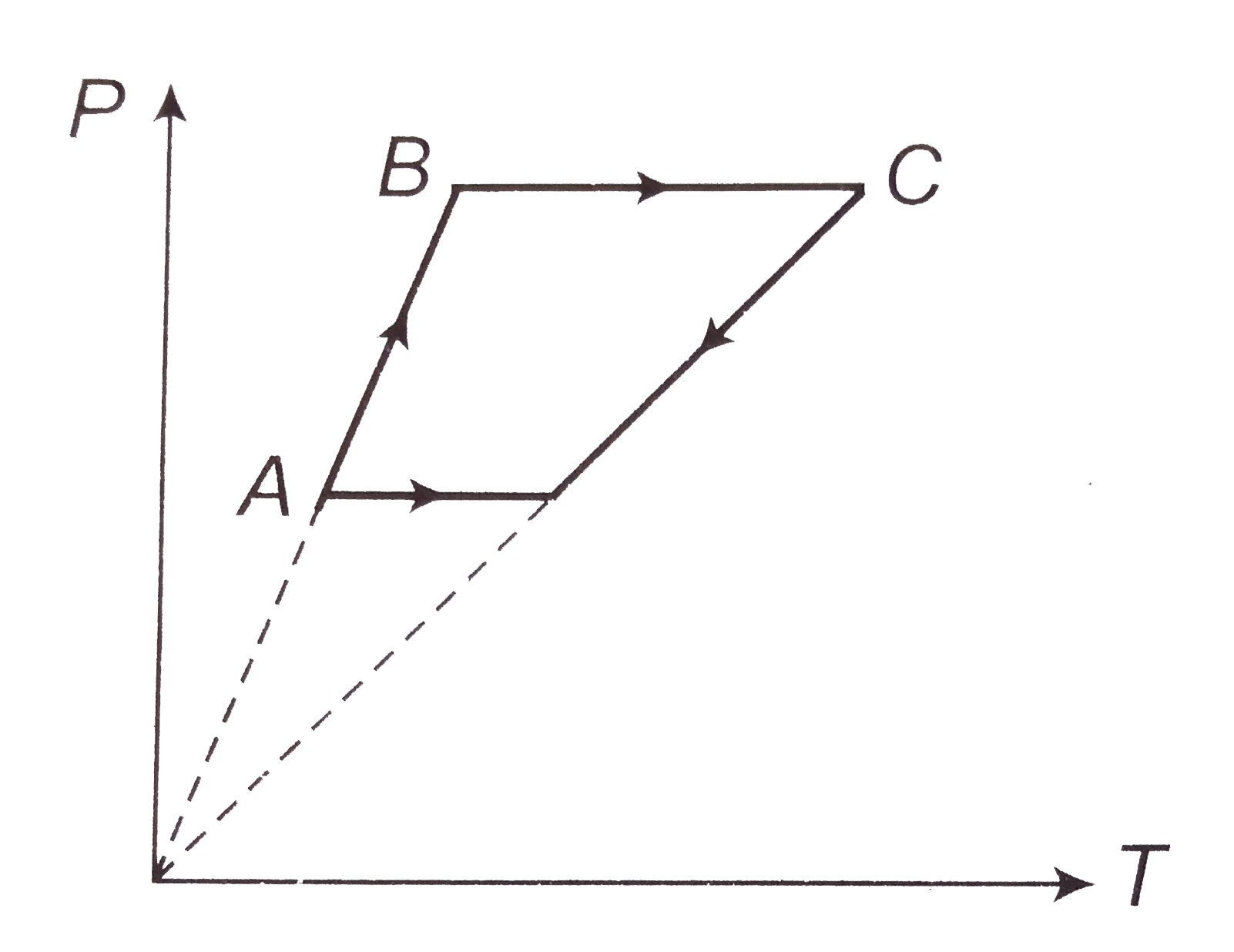
Six moles of an ideal gas performs a cycle shown in figure, the temperature are TA=600K,TB=800K,TC=2200K and TD=1200K, the work done per cycle is
View Solution

